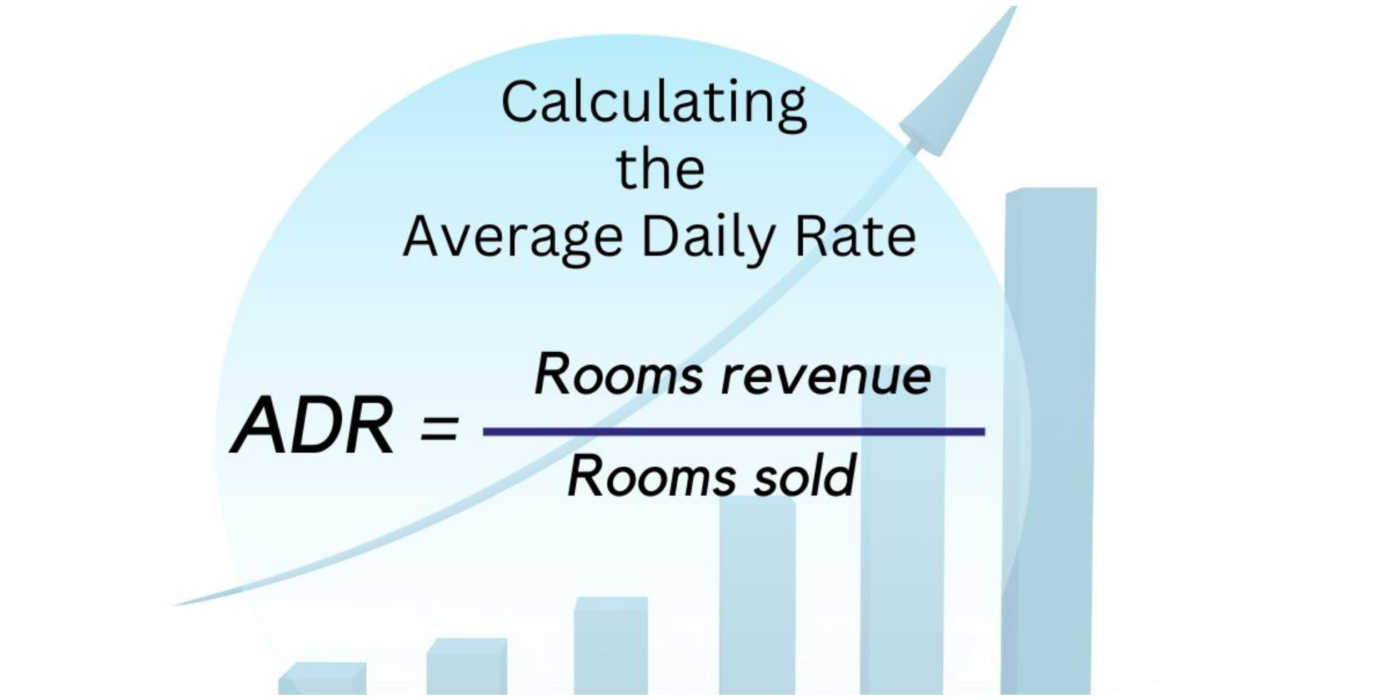In the hospitality industry data is very important especially when you are speaking of room rates or revenue generation. Speaking of data to measure hotel’s revenue, three of the most popular KPIs are: Occupancy Rate, RevPar and ADR. These 3 metrics together help the hoteliers measure the operating performance and success rate of the property. In this article, we are going to discuss ADR, its calculation, and its effect on hotels.
What is ADR?
ADR stands for Average Daily Rate. It is the metric used in the hospitality industry to measure the average revenue generated per room sold per day. It shows you the average revenue earned for each guest room sold on a given day. Hotel’s ADR includes discounted rates, group sales, corporate rates, package deals and all other price points.
The formula for calculating ADR
Average Daily Rate = Total revenue generated by occupied rooms/ No. of rooms occupied
*Key point: Only the number of rooms sold on a given day is taken into consideration and not the total number of rooms in the property.
Understanding Average Daily Rate
For example, you own a hotel named “ABC” with 100 rooms. On the 20th of October, 80 rooms are sold. To avoid any confusion, let’s consider all the rooms belong to the same category. The total revenue generated on 20/10/2022 is $10000. Let’s see what’s the ADR on that day:
ADR = 10000/ 80 = $125
Now you know that your average daily rate per room sold is $125. But the question is what are you going to do with this data? There is no point in calculating ADR if you do not know the daily rate of the previous day or the revenue earned per room sold by your competitor.
Scenario 1: Suppose we know that the ADR of the previous day was $90. Then you can compare the data to see how effectively your rooms are generating revenue. But, if the ADR of the last day is $150, then we need to find out the difference in the room rates or selling strategy for the revenue lost.
Scenario 2: Let’s consider your next lane competitor hotel ‘B’ has an ADR of $175 on 20/10. Then it’s a clear indication that they are performing better than you. So, we need to find out the reason for this. Probably it’s the cause of 2 reasons: low occupancy rate or higher room rates.
The next question is what should you do to compete with the ADR of hotel B: reduce your occupancy rate or increase the price of the rooms. Before that, it is necessary to understand the effect of both.
Which is good: High ADR/ Low ADR?
- Average Daily Rate takes into consideration the total number of rooms sold on a given day unlike the total number of rooms in a property in RevPar calculation.
- Running a hotel involves various fixed costs: like lease rent, employee salaries, management charges, etc. A lower occupancy rate means less revenue. Irrespectively, the high-end fixed will affect the profit as it cannot be avoided.
- Increasing the room rates is not always an option. There is a possibility that Hotel B has a competitive advantage against your hotel for which it is able to charge a high price for the room. Increasing the price of the room as per them you might lose on your booking, reducing your occupancy rate in turn.
Therefore, your goal should not be for an ADR towards the higher end or the lower end. You should opt for a strategy that provides optimal revenue leading to profit maximization.
Role of ADR in Revenue Maximization
The end goal of every hotel is to earn maximum revenue and that is only possible when all the rooms are sold. This can only happen when the hotel has a clear understanding of the maximum price the guests are willing to pay for a particular room. When a hotel is able to track this, you will set the best room price for your property that will get the apt occupancy rate and you will be making the maximum profit.
To achieve the optimal occupancy rate and ADR, it is essential for you to understand the role of ADR in benchmarking your room rates. Remember, ADR is never the same for 2 days. It varies for room types, different days of the week, seasonal demand, vacation time, market trends, and other macroeconomic conditions.
Having a direct relationship with market demand, guests’ preferences and other price points ADR plays a vital role in benchmarking room rates.










